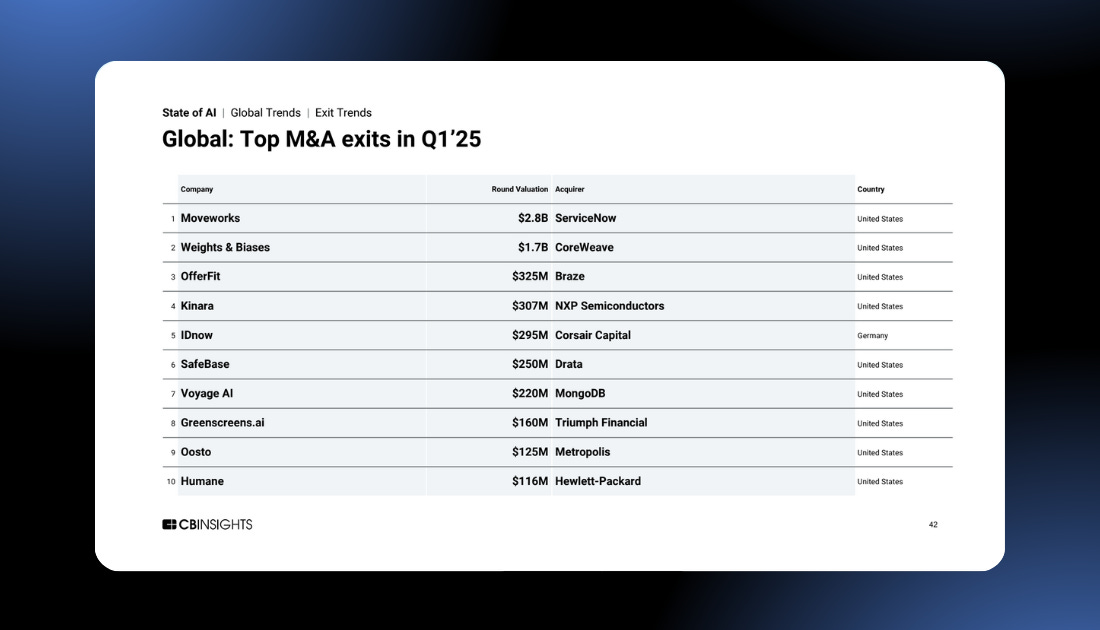AI Gap Is Measured in Months – And You’re Running Out of Time
And most companies are already behind.
Let’s get brutally honest for a second.
While you’re still forming AI committees and drafting roadmaps, your competitors are already deploying agents that work 24/7, generate millions in savings, and quietly replace what once took entire teams.
They’re not “experimenting with AI.” They’re shipping with it.
I talk to a lot of business leaders every week. Some get it and are using AI to double their capacity without doubling headcount. Others? Still waiting for “a clearer picture” to emerge.
But the picture is already crystal clear. AI isn’t a five-year plan anymore. It’s a five-month advantage. If you’re not actively implementing like right now, you’re not just falling behind.
You’re already behind.

We’re Not Building Better Tools — We’re Reinventing How Work Gets Done
AI isn’t just automation. It’s changing the very nature of business operations.
We’ve crossed a line from imperative to declarative. That means we’re no longer telling machines how to do things. We’re telling them what we want, and they figure out the how.
Klarna’s AI agent handled 2.3 million customer service chats in 35 languages in a single month. That's the equivalent of 700–800 full-time agents, and it’s saving them $40 million in 2024 alone.
Still think you’ve got time?
Your IT Team Is Becoming Your Digital HR Department
Jensen Huang nailed it: “The IT department of every company is going to be the HR department of AI agents.”
In the AI age, your tech team won’t just maintain systems. They’ll construct agents, orchestrate digital workers, and manage AI workflows that get better with every week.
At Zazmic, we’re already helping companies make that shift by migrating infrastructure to GCP, optimizing AI-first architecture, and offering free workshops to map out where AI fits best in their value chain.
Spoiler: it fits everywhere.
No more excuses. Just examples
United Wholesale Mortgage doubled underwriter productivity. Aberdeen City Council is projecting $3 million in annual gains. Lumen cut sales prep time from 4 hours to 15 minutes.
These aren’t moonshot case studies. They’re signs that agentic systems are real, reliable, and revenue-generating right now.
Need some more stats? 59% of businesses that have already implemented AI are reporting increased revenue. Not “improved workflows.” Revenue.


The Winners Are Building “Semantic Organizations”
You can’t just bolt AI onto your mess of disconnected data systems. Companies that are really taking off (like Palantir — look up their growth curve) are building companies where knowledge isn’t locked in people’s heads or siloed databases, but structured in ways AI agents can act on.
That’s why old-school relational databases are dead weight.
Today, the smart ones use document stores like MongoDB and streaming engines like Redpanda to build nervous systems for their businesses. Data becomes context. Context becomes action.
And here’s the kicker: while your org is arguing about cloud strategy, your competitors are spinning up AI agent fleets every morning to review sales, adjust pricing, and deploy updates before 9 AM.
By the time you read the weekly status report, they’ve already shipped version two.

Meet Your New Team: Constructors, Orchestrators, and Super ICs
What's tomorrow’s IT department? One thing is for sure: it’s not maintaining servers. It’s managing digital employees.
Agent Constructors build agents the way engineers used to write code.
Agent Orchestrators manage them like you manage teams: assigning work, tracking outcomes, coordinating agent-to-agent workflows.
And then there are your secret weapons: Super ICs.
You know the ones. The tenured analysts, the domain experts who “just know” how things really work. They’re the ones who turn knowledge into reusable, teachable intelligence.
Ignore them, and you’re building agents with no map. Empower them, and you’ve got AI that truly understands your business.
The Real Constraint Isn’t Compute. It’s Courage.
Let me be blunt: process-heavy companies are doomed.
We spent a decade turning software into factory work: sprint rituals, endless Jira tickets, backlogs nobody reads. Meanwhile, the world shifted. AI doesn’t wait two weeks for backlog grooming. It iterates now.
Your real edge isn’t more process—it’s permission.
Permission to experiment. To fail fast. To build sandboxes, not safe spaces. To let your people construct agents, break things, and learn.
That’s how you build momentum. That’s how you build capacity. That’s how you build survival.
AI Is Abundant. Your Time Isn’t.
AI is no longer scarce or expensive. It’s cheap. Everywhere. And getting smarter daily.
The only scarce resource now? Your ability to deploy it.
Most execs still think they have time. “We’ll catch up next year.” “Let’s do a pilot.”
Here’s the truth: if your business isn't changing right now, you're already behind. The AI gap isn't theory on paper. It’s compounding. And soon it’ll be unbridgeable.
Every week you delay, your competitors build agents that get better at eating your market.
So, what are you going to do?

Let’s Talk About Your Business, Not Just the Tech
That’s what we do in our AI workshops.
No "future of work" panels. Just real talk, real demos, and proof-of-concept solutions tailored to your industry. For free.
I’m not saying AI will solve all your problems. But I can guarantee one thing: ignoring it will create new ones you didn’t see coming.
Let’s surf this AI wave before it becomes a wall.



